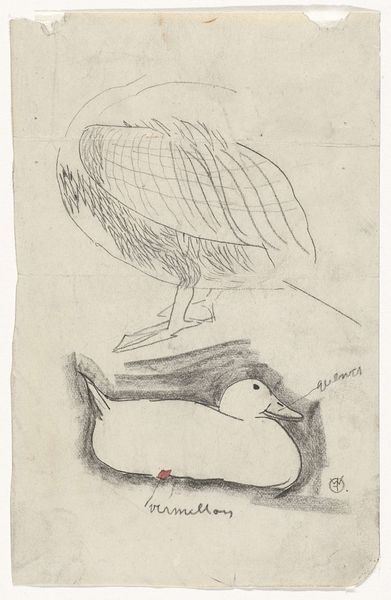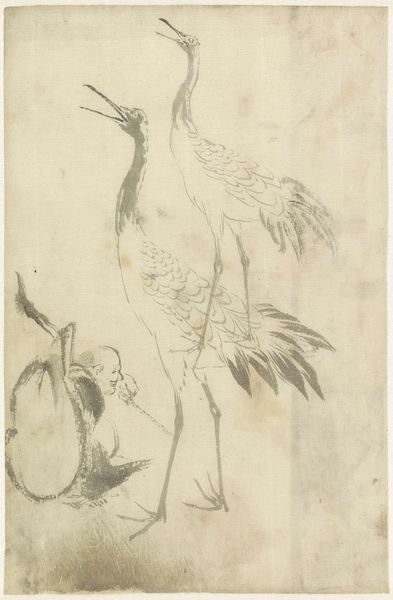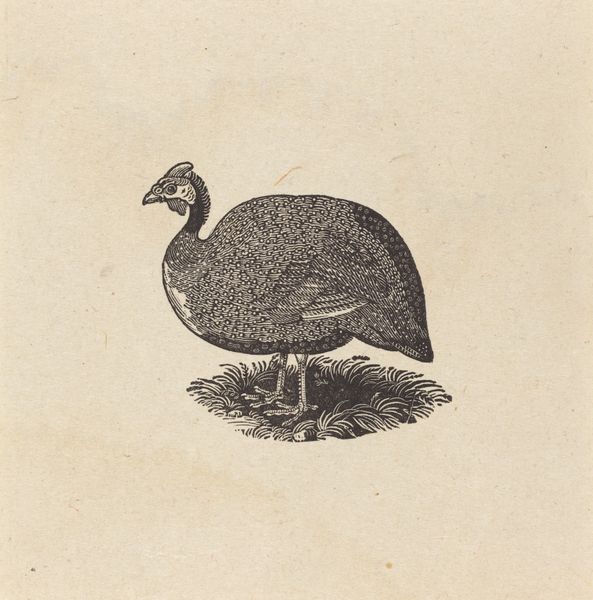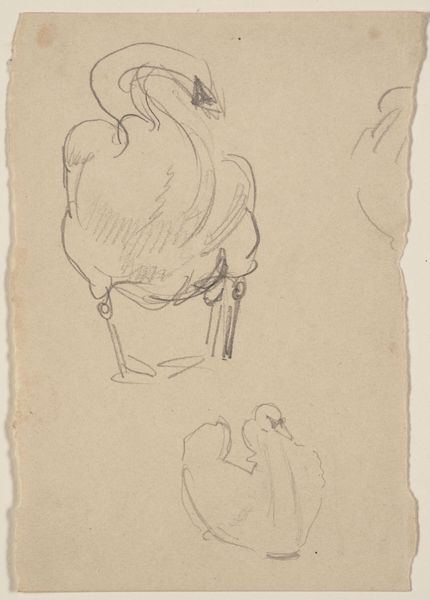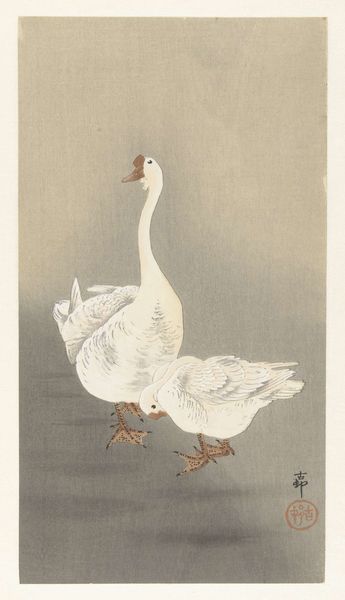
drawing, ink, pen
#
drawing
#
ink drawing
#
pen sketch
#
figuration
#
ink
#
line
#
pen
#
naturalism
Dimensions: height 164 mm, width 68 mm
Copyright: Rijks Museum: Open Domain
Curator: Gerrit Willem Dijsselhof created this pen and ink drawing, "Duck and a Sitting Bird," sometime between 1876 and 1924. It's currently held here at the Rijksmuseum. What strikes you first about it? Editor: The starkness, maybe. And the unadorned directness of the lines. It feels immediate, like a quick sketch capturing the essence of these birds. There is an intimacy and inherent beauty in observing animals in their natural environment, no? It makes me consider questions around anthropocentrism and the impact on the ecological balance. Curator: Indeed. Dijsselhof, known for his involvement in the Dutch Arts and Crafts movement, was very interested in naturalism, but his focus evolved from botanical illustration towards more symbolic, decorative works later in his career. The spareness here likely serves a practical, observational function, more akin to a study than a finished piece, created before the era when society truly began taking such elements to scale to challenge and redefine their roles and implications in their socio-political interactions. Editor: I am immediately drawn to the contrast between the sitting bird at the top and the duck below it. The sitting bird has a closed in posture while the duck, it's upright, almost defiant. Curator: Right, a compositional tension perhaps. The lower bird engages directly while the other retreats inward. However, looking at the time of production—between 1876 and 1924—one wonders about the social positionality inherent in depictions of animals. Animal studies in art schools often served the purpose of honing observational skills and mastering form. In a social climate marked by emerging industrialization and the development of a professional artist identity, such drawings could represent an effort to scientifically dissect and dominate the natural world. Editor: That is astute. Do you suppose he felt that they symbolized qualities found in humans at the time? Perhaps his rendering here transcends the mere replication of forms. I believe that we may be perceiving in this image his engagement with the broader issues around human agency, labor, freedom, and their socio-political and cultural standing. Curator: Ultimately, the precise meaning remains open to interpretation, yet understanding these potential intersections provides us with insight into the context of its making and viewing then and now. Thank you for your insightful contributions! Editor: It was my pleasure, thanks for expanding our thoughts!
Comments
No comments
Be the first to comment and join the conversation on the ultimate creative platform.




